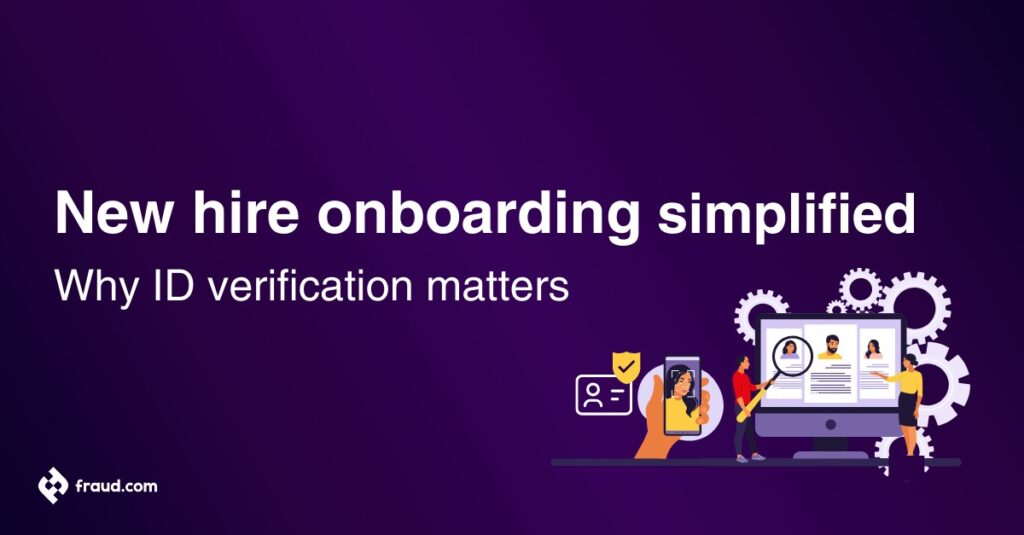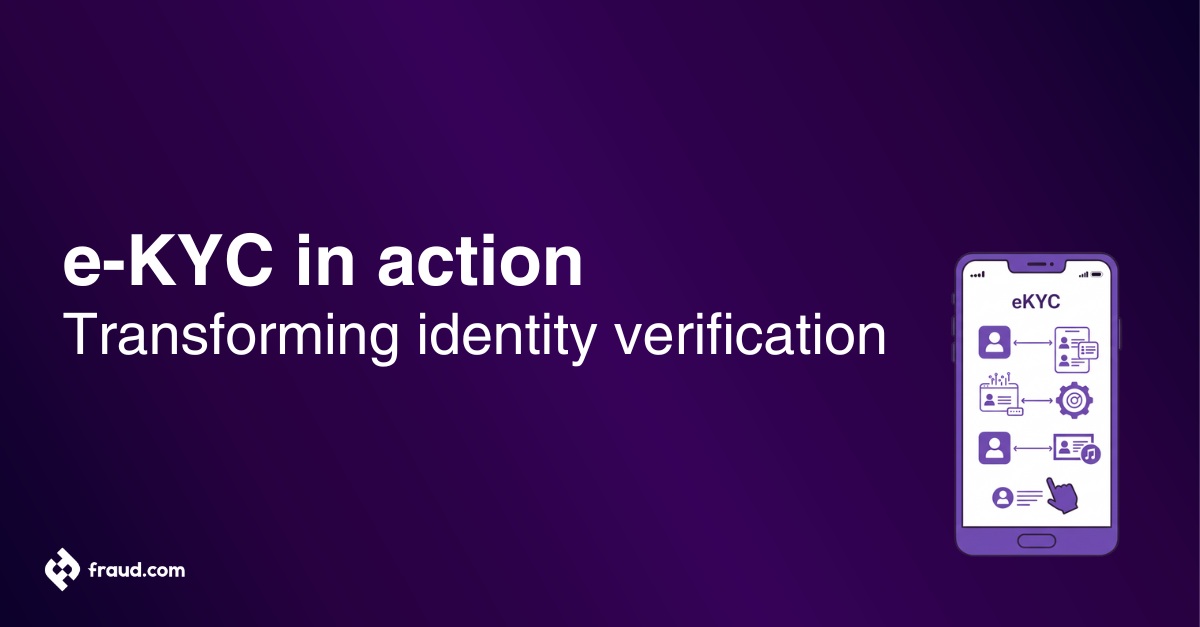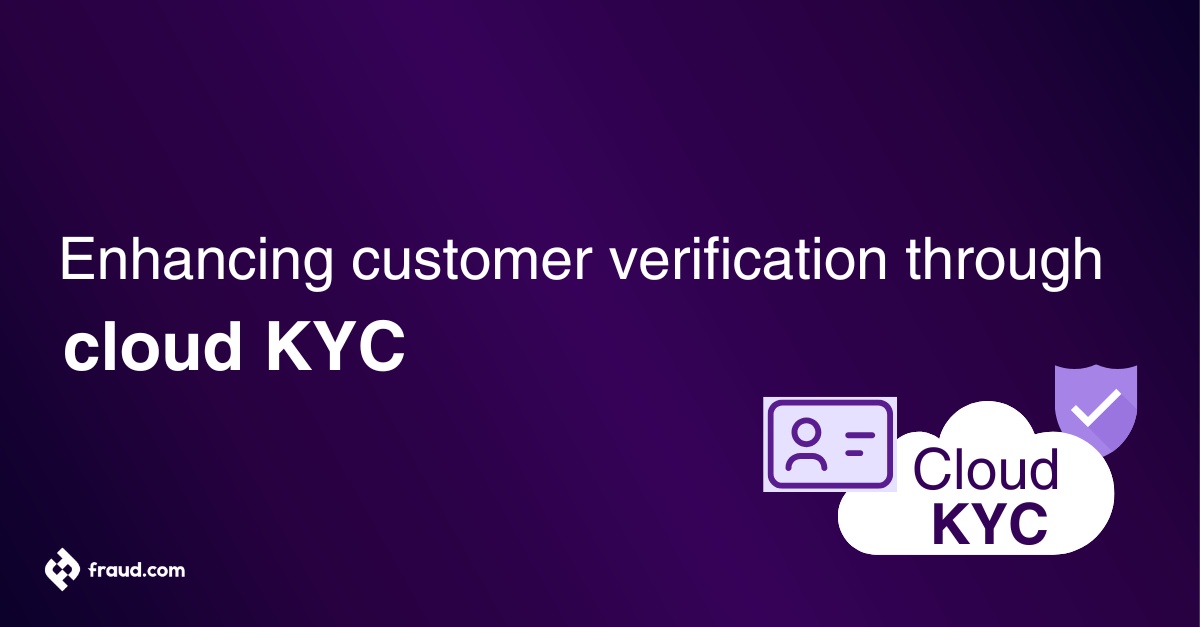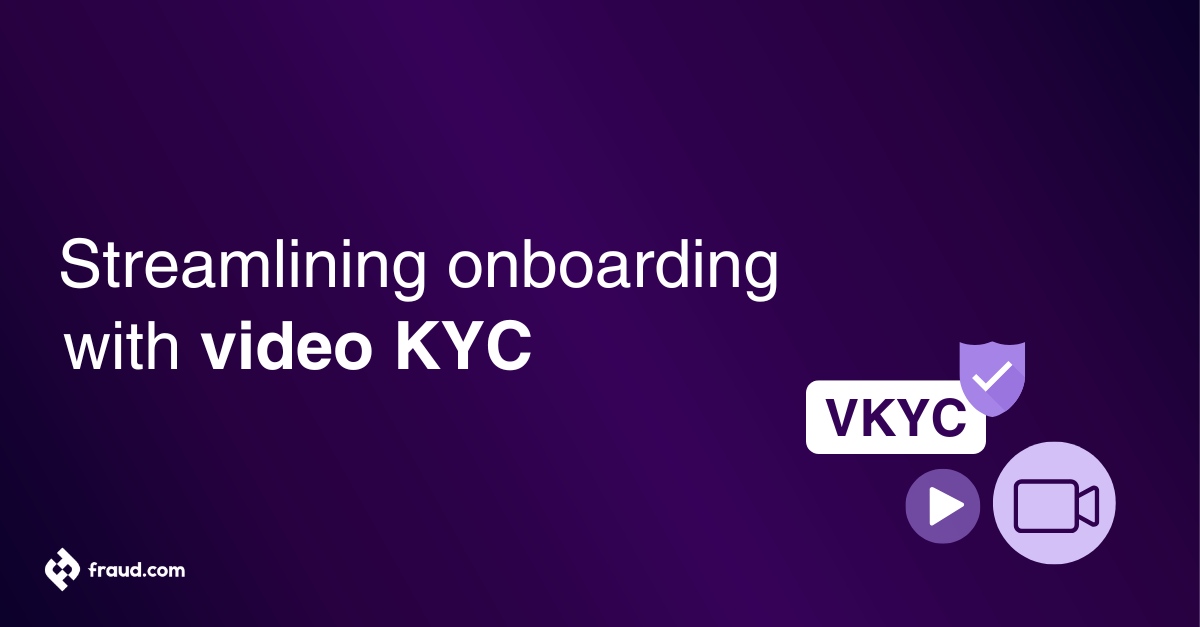In the fast-paced corporate landscape, the onboarding process is recognized as a vital first step, establishing the foundation for a new hire’s entire journey within the organization. Amidst the excitement of new beginnings, essential security measures that protect this transition can easily be overlooked. Identity verification, often regarded as a mere checklist item, serves as the cornerstone of trust between employer and employee. With remote work and digital hiring becoming the norm, the significance of robust ID verification has never been more pronounced.
This article will explore how the streamlining of new hire onboarding through effective identity verification goes beyond mere compliance, it is viewed as a strategic move that secures not only the integrity of the hiring process but also the future success of the workforce.
Table of Contents
ToggleWhat is new hire onboarding?
New hire onboarding refers to a comprehensive process designed to seamlessly integrate new hires into an organization. It ensures that essential tools, information, and support are provided from the very first day. This process encompasses much more than a simple orientation; it includes carefully planned steps that begin before the new hire’s start date and continue throughout their initial months in the role.
Successful onboarding helps new employees acclimate to the company’s culture, values, and expectations while equipping them with the necessary training and resources to fulfill their job responsibilities. It also plays a key role in benefit enrollment, ensuring that new hires have the information they need to make informed decisions.
What is onboarding in HR?
Onboarding in HR is the structured process of integrating new hires into an organization. It blends administrative, cultural, and role-specific training to familiarize new hires with the company’s operations, values, and expectations. HR professionals aim to create an onboarding experience that addresses immediate job responsibilities, fosters employee engagement, and encourages long-term retention from day one.
What is employee onboarding?
Employee onboarding refers to the steps taken to help new hires transition smoothly into their roles. This includes equipping employees with the necessary tools and resources, clarifying responsibilities, and fostering relationships within the team. A well-structured onboarding process not only ensures new hires are set up for success but also aligns them with organizational goals and contributes to a positive, engaged workforce.
How these onboarding terms relate
Though the terms “Onboarding in HR,” “Employee onboarding,” and “New hire onboarding” are often used interchangeably and are generally understood in similar ways, each concept emphasizes different elements of the process. Onboarding in HR represents the broader strategic approach to employee integration, aligning with company retention and engagement goals.
Employee onboarding processes focuses on the practical steps to familiarize new hires with their roles and company culture. New hire onboarding, however, is more specific, centering on the immediate actions taken to welcome a new employee during their initial days and weeks. While these concepts are closely related, they each bring a unique perspective to the onboarding experience.
How does new hire onboarding work?
New hire onboarding is designed to guide employees through their initial transition into the company, providing a structured framework that supports their journey from the moment they accept an offer to their integration into the team. This process is carefully crafted to ensure that new hires feel welcomed, informed, and prepared to succeed in their roles. Below are the key phases of an effective onboarding process, each tailored to build confidence and foster connection from day one.
What is the new hire onboarding process?
A comprehensive new hire process is typically comprised of several key components:
- Pre-boarding: This phase begins as soon as an offer is accepted, focusing on the preparation of logistics such as granting necessary access to systems, delivering welcome kits, and sharing informative materials about the company.
- Orientation: Often conducted during the employee’s first day or week, this phase provides an overview of company policies, procedures, and culture. Introductions to team members and key stakeholders are also commonly included.
- Training and development: Tailored to the specific role of the new hire, this component emphasizes the development of essential skills and knowledge required for their position. Various formats, such as workshops, e-learning modules, and on-the-job training, are leveraged to facilitate this process.
- Social integration: This aspect aims to cultivate a sense of belonging and community within the workplace. Activities such as team-building exercises, mentorship programs, and informal networking opportunities are often incorporated.
- Feedback and evaluation: Regular check-ins and performance assessments are conducted to align employee expectations with company goals, allowing adjustments to the onboarding process to better meet the needs of both the individual and the organization.
A well-structured and good onboarding program is known to enhance employee satisfaction and productivity while significantly reducing turnover rates. As such, it is recognized as a valuable investment that benefits both the new hire and the organization in the long run.
Why is new hire onboarding important?
New hire onboarding is regarded as much more than a simple introduction; it is considered a strategic component of human resource management that significantly shapes an employee’s experience and success within an organization. Several key reasons highlight why effective new hire onboarding is essential:
- Enhanced productivity: Through a comprehensive onboarding process, new employees are provided with the knowledge and tools needed to quickly adapt to their roles. By outlining job responsibilities and expectations clearly, onboarding helps reduce the time required for new hires to become productive members of their teams.
- Enhanced employee retention: Effective onboarding fosters a welcoming and supportive environment, contributing to increased job satisfaction and long-term retention. Research consistently indicates that employees who experience positive onboarding are more likely to remain with their employers over time.
- Cultural assimilation: Onboarding serves as an important bridge between new hires and an organization’s culture. By introducing the company’s values, mission, and work culture early on, onboarding helps employees feel aligned with the organization’s goals and fosters a sense of connection to the workplace community.
- Reduced anxiety and improved engagement: Starting a new role often involves some uncertainty. A well-structured onboarding program helps alleviate this anxiety by providing clear guidance and support, which in turn fosters greater engagement and confidence within the role.
- Consistent compliance and understanding: Onboarding ensures that new hires become well-versed in company policies, procedures, and compliance requirements. This awareness helps prevent potential compliance issues and aligns employee actions with the organization’s regulatory standards.
- Strengthened employer brand: A seamless and supportive onboarding process reflects positively on the organization, reinforcing its reputation as an employer of choice. This favorable perception can attract top talent and build a loyal workforce that shares positive experiences about their employer.
In essence, new hire onboarding is recognized as a strategic investment that influences both individual employee success and the organization’s overall performance. By prioritizing this process, companies can build a motivated, engaged, and well-aligned workforce, driving long-term success and growth.
New hire onboarding checklist
To ensure a smooth transition for new hires, a structured checklist can provide guidance at each step of the onboarding process. This checklist highlights key actions and best practices to help new employees integrate seamlessly into their roles and the organization.
1. Pre-arrival preparation
- Access and equipment setup: Ensure that necessary accounts, system access, and equipment (laptops, phones, etc.) are ready before the first day.
- Welcome materials: Prepare welcome kits, including company-branded items, onboarding schedules, and any preliminary resources to set a positive first impression.
- Initial communications: Send a welcome email or message introducing the new hire to key contacts and providing an outline of their first week.
2. First-day essentials
- Orientation and introduction: Schedule an orientation session to familiarize the new hire with the company’s structure, policies, and culture. Introduce them to immediate team members and relevant stakeholders.
- Company policy overview: Review key policies on topics such as workplace conduct, compliance, and data privacy to establish a foundational understanding.
- Role-specific briefing: Provide an overview of the new hire’s responsibilities, immediate projects, and performance expectations.
3. Training and development
- Role-specific training: Arrange for training sessions tailored to the employee’s position, which may include hands-on practice, e-learning modules, or mentorship support.
- Technology and tools: Offer training on essential systems, software, and tools that the new hire will use regularly.
- Professional development: Outline any available resources for skill-building, such as workshops, seminars, or access to e-learning platforms.
4. Social and team integration
- Mentorship pairing: Pair the new hire with a mentor or buddy to offer guidance and answer questions during the initial weeks.
- Team-building activities: Encourage participation in informal gatherings or team events to foster a sense of community.
- Networking opportunities: Facilitate introductions with members from other teams or departments to expand the new hire’s internal network.
5. Ongoing check-ins and feedback
- Regular check-ins: Schedule regular meetings with the manager or team lead to discuss progress, answer questions, and provide feedback.
- Performance milestones: Set clear milestones for the initial 30, 60, and 90 days to guide development and measure progress.
- Adjustments and support: Address any concerns or adjustments needed in the onboarding process based on feedback, ensuring the new hire feels supported.
A well-implemented checklist serves as a roadmap, guiding new hires through their onboarding journey and laying a strong foundation for success in their roles. By following this structured approach, companies can ensure that all necessary steps are taken to help new employees feel welcomed, prepared, and fully integrated.
The role of ID verification in new hire onboarding
Adding identity verification to the new hire onboarding process is more than just a security measure, it’s about building a foundation of trust and compliance from day one. As more workplaces adopt remote and digital setups, ID verification has become essential. Here’s why it plays such a crucial role in onboarding:
- Ensuring legal compliance: Identity verification helps companies stay compliant with employment laws and regulations, like verifying eligibility to work and preventing discrimination and other rigorous identity verification regulations. By confirming each new hire’s identity, organizations can be confident they’re meeting legal standards and avoiding compliance risks.
- Mitigating fraud and security risks: As fraud tactics grow increasingly sophisticated, verifying a new hire’s identity has become critical in safeguarding against both identity theft and employee fraud. ID verification serves as a security checkpoint, protecting sensitive information and company resources from unauthorized access and ensuring that only legitimate, vetted individuals join the organization.
- Enhancing trust and credibility: Employees are more likely to trust an organization that values secure, accurate onboarding processes. By including ID verification, employers demonstrate a commitment to professionalism and a secure work environment right from the start.
- Streamlining onboarding processes: Today’s ID verification technology speeds up the hiring process, cutting down the time and resources spent on manual checks. Automated solutions provide fast, accurate verification, freeing HR teams to focus more on employee engagement and development.
- Facilitating global hiring: As companies reach for talent across borders, digital ID verification makes it easy to onboard international employees. These systems can verify documents from various jurisdictions, allowing businesses to expand their talent pool without geographic limits.
- Establishing a secure digital identity: Digital ID verification during onboarding doesn’t just secure the hiring process, it creates a digital identity that employees carry throughout their time with the company. By linking with HR and IT systems, this digital identity helps create a smooth and secure experience across different platforms.
In short, ID verification is a crucial part of a strong onboarding strategy. By integrating robust verification processes, organizations aren’t just protecting themselves from risks, they’re also laying the groundwork for a culture of trust, security, and compliance that supports long-term success in a digital world.
New hire onboarding best practices
To maximize the impact of onboarding, organizations are encouraged to adopt best practices that ensure new employees feel welcomed, informed, and prepared for success. Here are some essential practices to consider:
Start before day one: A pre-boarding strategy is recommended to begin as soon as the offer is accepted. Welcome emails, access to an onboarding portal, and relevant resources are shared to help new hires acclimate before their first day.
Personalize the experience: Personalization is considered a powerful way to enhance the onboarding journey. Tailoring the process might include arranging one-on-one meetings with team members, offering customized training programs, and allowing flexible schedules that align with individual learning styles and preferences.
Communicate clearly and often: Consistent communication throughout the onboarding process is key. Clear, concise information about the company, role expectations, and available resources is provided. Questions are encouraged, and HR remains accessible to address any concerns that arise.
Integrate with the team: Early introductions to team members and key stakeholders foster a sense of belonging. Meetings, lunches, or video calls are scheduled to build relationships and help new employees feel connected to the team.
Deliver structured training: A structured training program covering job-specific skills, company policies, and cultural expectations is essential. Training is delivered using a mix of formats, online modules, workshops, and hands-on experiences, to improve learning and retention.
Use technology: Onboarding software and digital onboarding tools streamline documentation, ID verification, and training tasks. The use of technology makes processes more efficient and accessible, benefiting both the organization and new hires.
Provide continuous support and feedback: Regular check-ins are arranged to evaluate the onboarding experience. Feedback from new hires and their managers is gathered, allowing for continuous refinement and improvement of the onboarding process.
Set clear goals and expectations: Short- and long-term goals aligned with company objectives are clearly defined. This clarity helps new hires understand their role within the team, encouraging them to pursue meaningful early wins.
Foster a culture of inclusion: Inclusivity is prioritized to ensure that new hires feel respected and valued. Open discussions around diversity, equity, and inclusion are encouraged, promoting a welcoming and supportive workplace atmosphere.
By adopting these best practices, organizations can streamline onboarding while enhancing employee satisfaction and engagement. A thoughtful, well-executed onboarding strategy is seen as instrumental in creating a positive and productive employment experience, ultimately contributing to the organization’s success.
How Udentify simplifies new hire onboarding with ID verification
The onboarding process plays a critical role in ensuring a smooth transition for new hires. As digital and remote hiring increase, security measures like ID verification have become essential. Using identity verification during onboarding creates a seamless, trustworthy, and secure process, protecting both the company and the employee.
Udentify streamlines new hire onboarding by automating secure ID verification, ensuring compliance, enhancing efficiency, and mitigating security risks. By integrating Udentify, organizations build a secure, efficient, and legally compliant onboarding process, setting the stage for long-term success.
New hire onboarding FAQ
| Question | Answer |
|---|---|
| What is new hire onboarding? | It’s a comprehensive process that integrates new employees into the company, providing tools, information, and support from the first day through the initial months. |
| Why is onboarding important? | Onboarding helps new hires adjust to the company’s culture, values, and expectations while equipping them with the necessary tools and resources to succeed. |
| When does the onboarding process start? | Onboarding begins before the new hire’s start date and continues through the first few months in their role. |
| What is included in the onboarding process? | It includes training on job responsibilities, company culture, policies, benefit enrollment, and team integration. |
| Who is responsible for onboarding? | HR professionals and hiring managers collaborate to create and implement the onboarding process for new hires. |
| What are the key benefits of a successful onboarding program? | It ensures that new hires feel welcomed, informed, and prepared for their roles, increasing retention and engagement. |
| What are some common onboarding tools? | Onboarding tools can include ID verification, training modules, employee handbooks, benefits enrollment systems, and communication platforms. |
| How long does the onboarding process last? | The onboarding process can last from a few weeks to several months, depending on the role and the organization’s structure. |
| What happens during benefit enrollment? | New hires are introduced to company benefits, including health insurance, retirement plans, and other perks, allowing them to select the options that suit them. |









